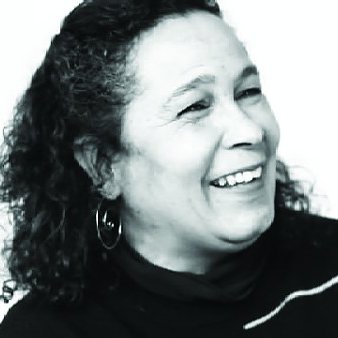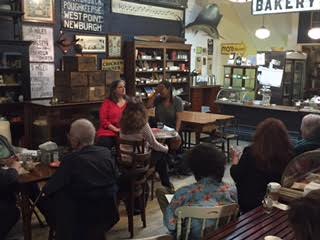WORD CAFE EVENT ARCHIVE
NICOLE QUINN, 11/5/15
 This week’s reading was a special treat–alongside her credits as screenwriter, playwright, and author of The Gold Stone Girl trilogy, Nicole Quinn is an award-winning audiobook narrator(http://nicolequinnnarrates.blogspot.com/). She read a brief selection from each of the trilogy’s three books (It’s a Nightmare, Disbelief, and Rewire), addressing our topic of “World-Building,” along with intertwined issues of character, narrative voice, and creative process
This week’s reading was a special treat–alongside her credits as screenwriter, playwright, and author of The Gold Stone Girl trilogy, Nicole Quinn is an award-winning audiobook narrator(http://nicolequinnnarrates.blogspot.com/). She read a brief selection from each of the trilogy’s three books (It’s a Nightmare, Disbelief, and Rewire), addressing our topic of “World-Building,” along with intertwined issues of character, narrative voice, and creative process
The trilogy unfolds in a far-distant future in which women are treated as breeding livestock. The earth’s continents have shifted into a single Pangaea-like mass ruled by the demonic Night Mare. Most of its inhabitants–human and otherwise–live in a massive urban sprawl, but reluctant hero Mina was born inside a willow tree and raised by folksy, quietly rebellious “off-gridders” Dee-Dee and Bubba.
Nicole’s impetus for the trilogy came from an image in It’s a Girl (http://www.itsagirlmovie.com/), Best Documentary winner at a festival that awarded Best Narrative Feature to her own film Racing Daylight (http://www.racingdaylightthemovie.com/home.htm). The documentary opened with a shot of brightly wrapped bundles bobbing in an Indian river; a title card identified them as cast-off baby girls. Nicole was horrified and galvanized.
She chose the far future as a way to avoid finger-pointing and lecturing, and to make things that are extreme in our world the norm. Nicole built her future’s culture organically and intuitively as she went along, often using everyday things she observed (a heron fishing, the word “housewife”) and putting a spin on them. She asserted that an invented world needs “really strong rules. You’re God in your world, but a good reader will notice if you break your rules.”
Nina pointed out that although the term “world-building” comes from fantasy literature (think Middle Earth, Narnia, Oz, Earthsea) the writer of any narrative needs to create the specifics of the world where the story takes place. What’s its history, culture, environment? How do its creatures behave? What well-chosen details–“brush strokes,” Nicole called them–will paint the whole picture, transporting us to another place or time?
Nicole does a lot of revising, and presented the terms “down draft” (as in getting it all down) and “up draft” (cleaning it up) as used by writing teachers Peter Bricklebank and Anne Lamott. (I couldn’t find the terms’ origin online, but here’s Lamott’s delightful essay on “Shitty First Drafts” from her book Bird By Bird.
As usual, everyone’s questions were excellent, and the conversation ranged from world-building to character and language. Which is as it should be, since they’re all joined at the hip. As Nicole said, “It’s all just storytelling.” Amen.

THE EXERCISES:
Nicole: Look inside your purse or pockets and describe the objects you find there as if to a being that has no familiarity with them at all.
Nina: Describe a place you used as a getaway or hideout as a child. Try to remember what you imagined there. If you want to make the imaginary element a step or two more literal, feel free.